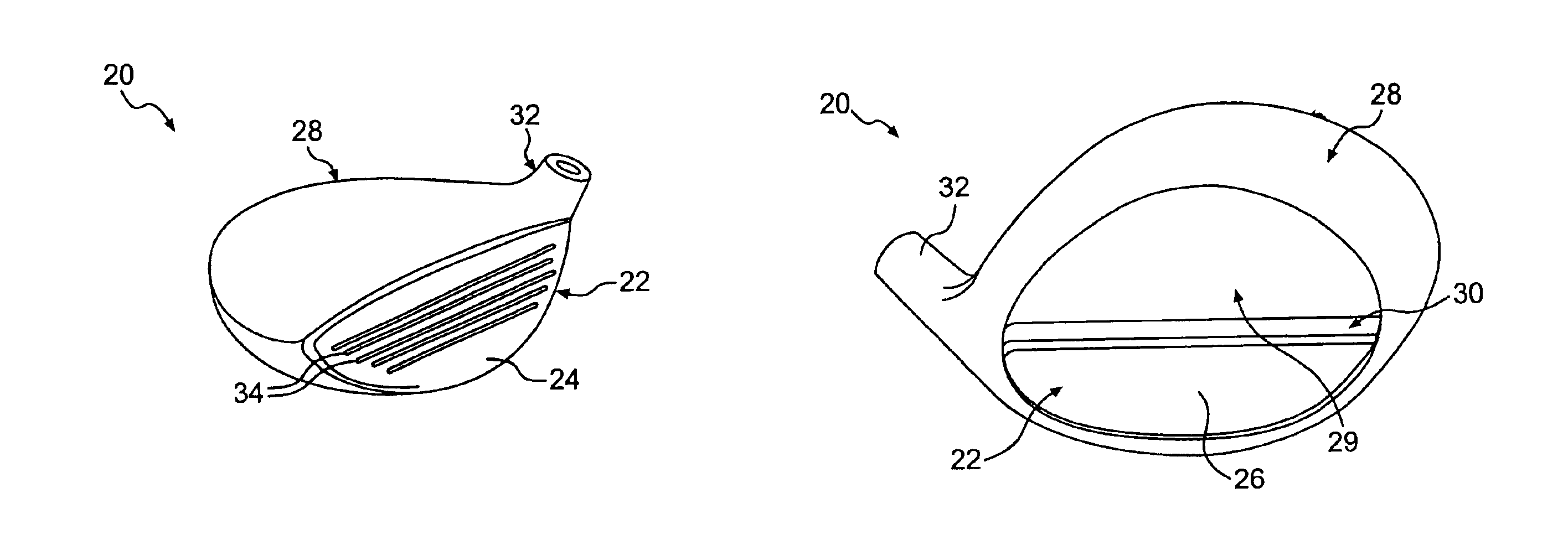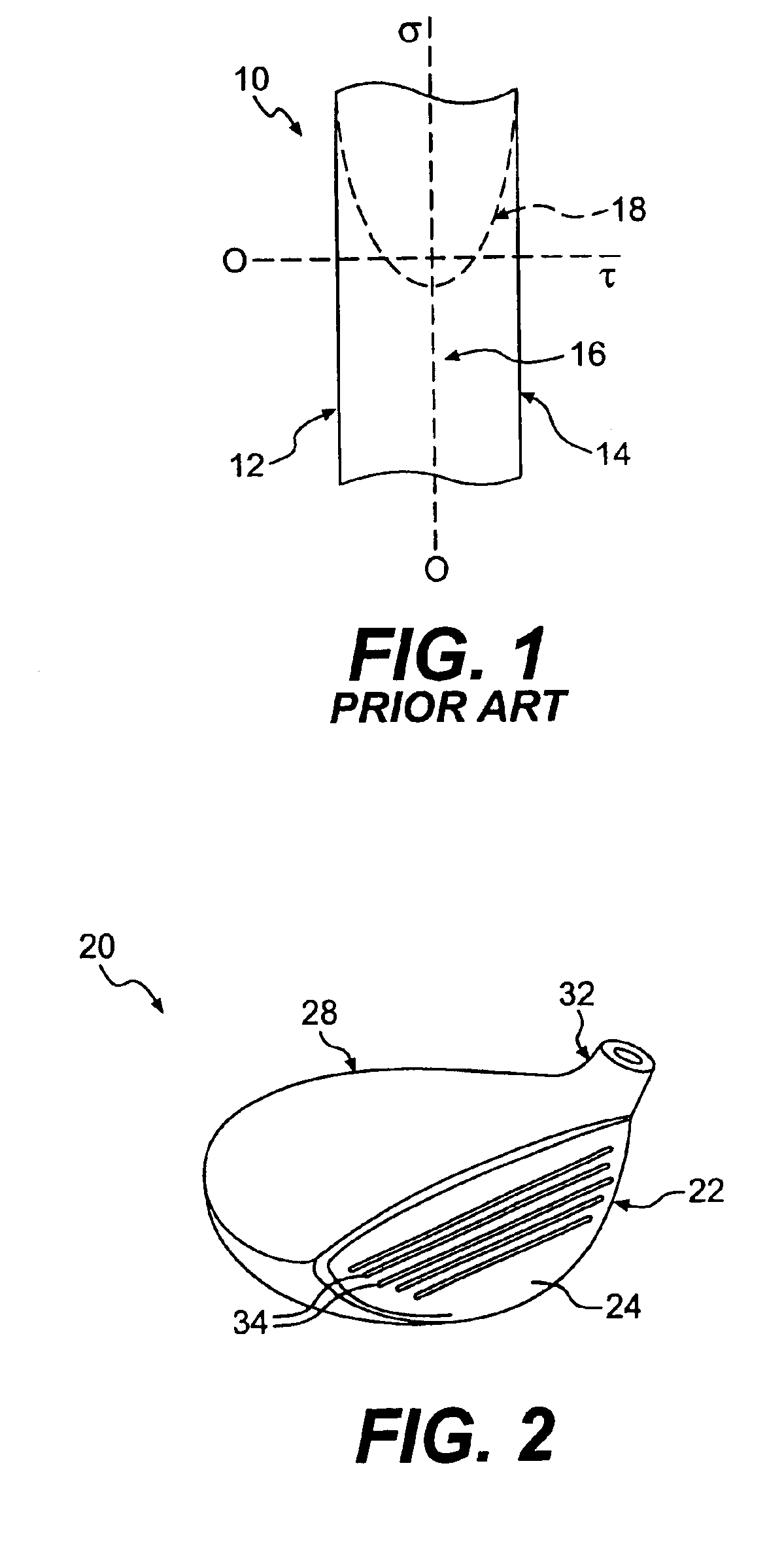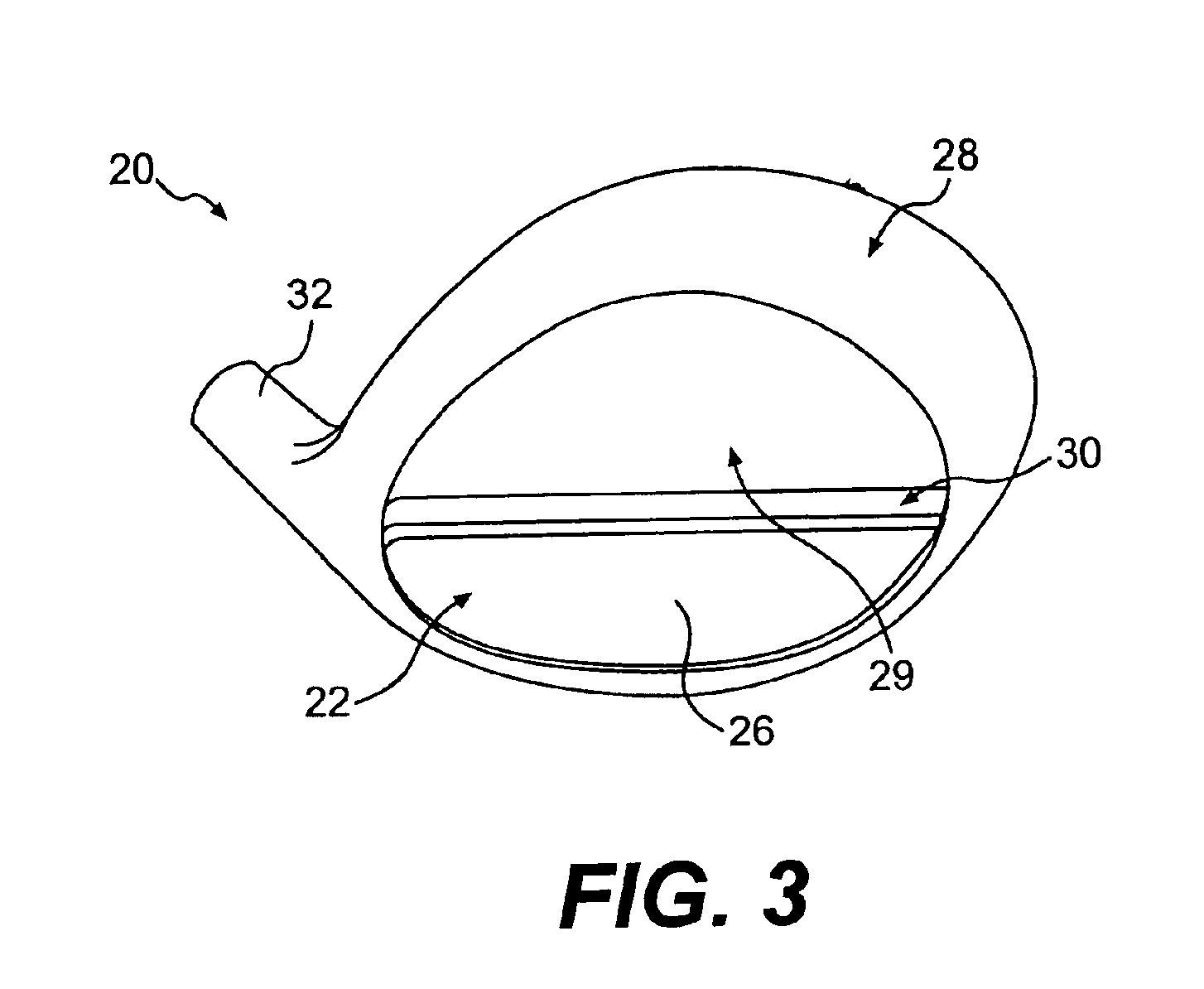Peen conditioning of titanium metal wood golf club heads
a golf club head and titanium metal technology, applied in the field of peening of surfaces, can solve the problems of reducing the fatigue life of a given club head, limiting the degree of thinness of the club face, and affecting the performance of the golf club. , to achieve the effect of decreasing the thickness of the fa
- Summary
- Abstract
- Description
- Claims
- Application Information
AI Technical Summary
Benefits of technology
Problems solved by technology
Method used
Image
Examples
Embodiment Construction
[0016]The present invention is directed to a golf club head with an inner surface that has been peened. Preferably, the inner surface of the face is treated, as well as inner regions generally adjacent to the face. The club head is preferably formed from a titanium alloy, due to the high strength and low weight of the metal, and the peening is preferably shot peening although other peening methods such as laser shock peening and abrasive water jet peening may be employed.
[0017]Peen treatments preferably are used to increase the hardness and residual compressive stresses of a golf club head. In principle, the formation of a compressive layer is similar to the manufacture of tempered glass. For example, as shown in FIG. 1, a prior art glass plate 10 may be heated and then quickly cooled by an air or oil quench. Due to the sudden drop in temperature, the surfaces 12, 14 of glass plate 10 contract and become rigid. The center 16 of glass plate 10, however, remains hot and adjusts to the...
PUM
| Property | Measurement | Unit |
|---|---|---|
| thickness | aaaaa | aaaaa |
| residual compressive stress | aaaaa | aaaaa |
| thicknesses | aaaaa | aaaaa |
Abstract
Description
Claims
Application Information
 Login to View More
Login to View More - R&D
- Intellectual Property
- Life Sciences
- Materials
- Tech Scout
- Unparalleled Data Quality
- Higher Quality Content
- 60% Fewer Hallucinations
Browse by: Latest US Patents, China's latest patents, Technical Efficacy Thesaurus, Application Domain, Technology Topic, Popular Technical Reports.
© 2025 PatSnap. All rights reserved.Legal|Privacy policy|Modern Slavery Act Transparency Statement|Sitemap|About US| Contact US: help@patsnap.com



